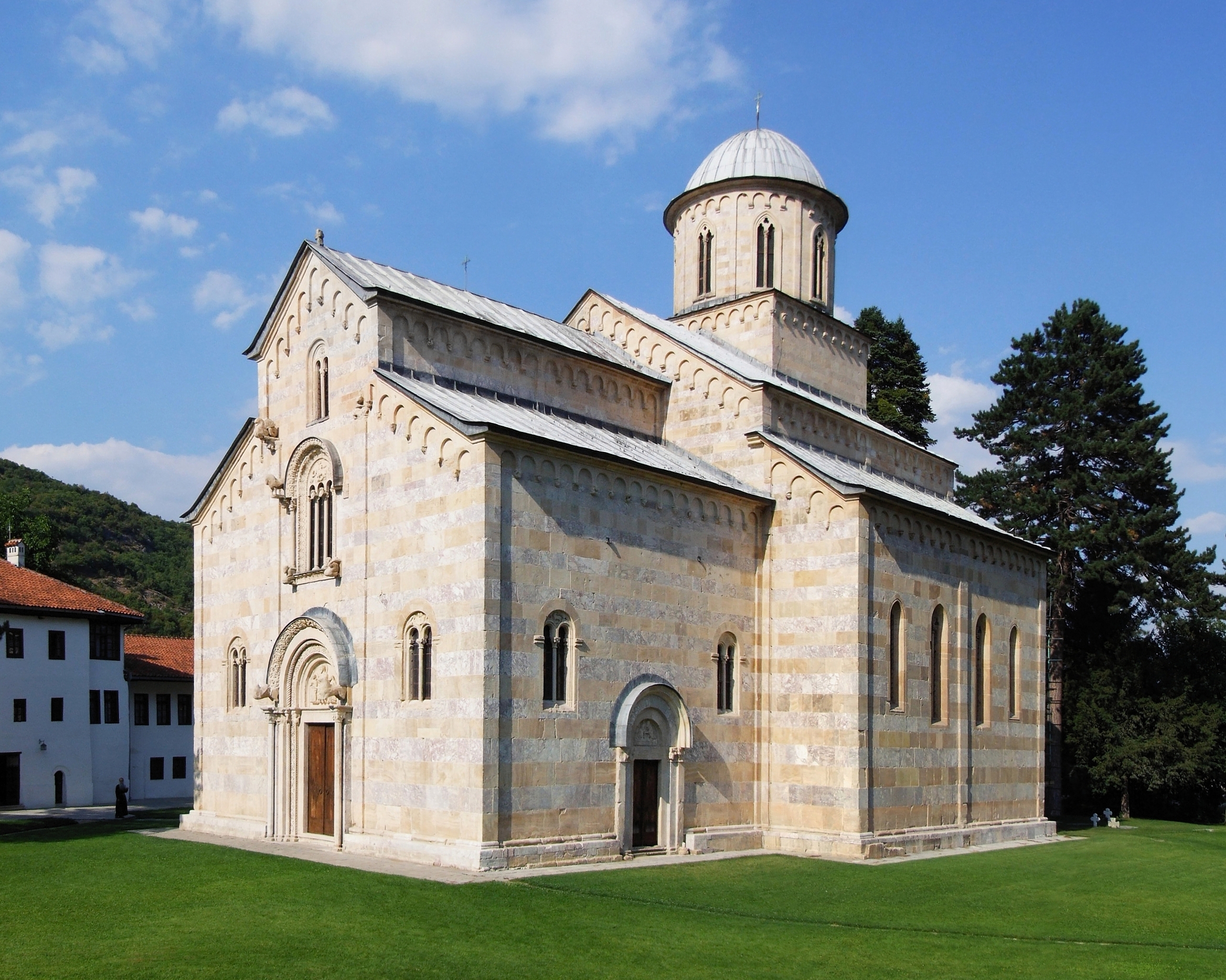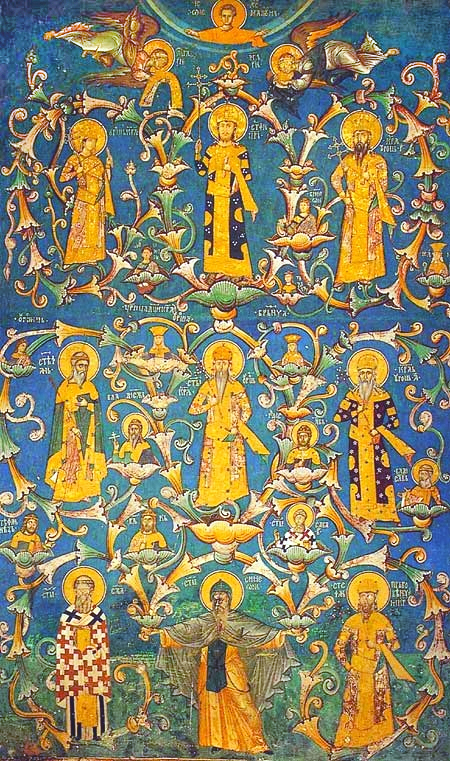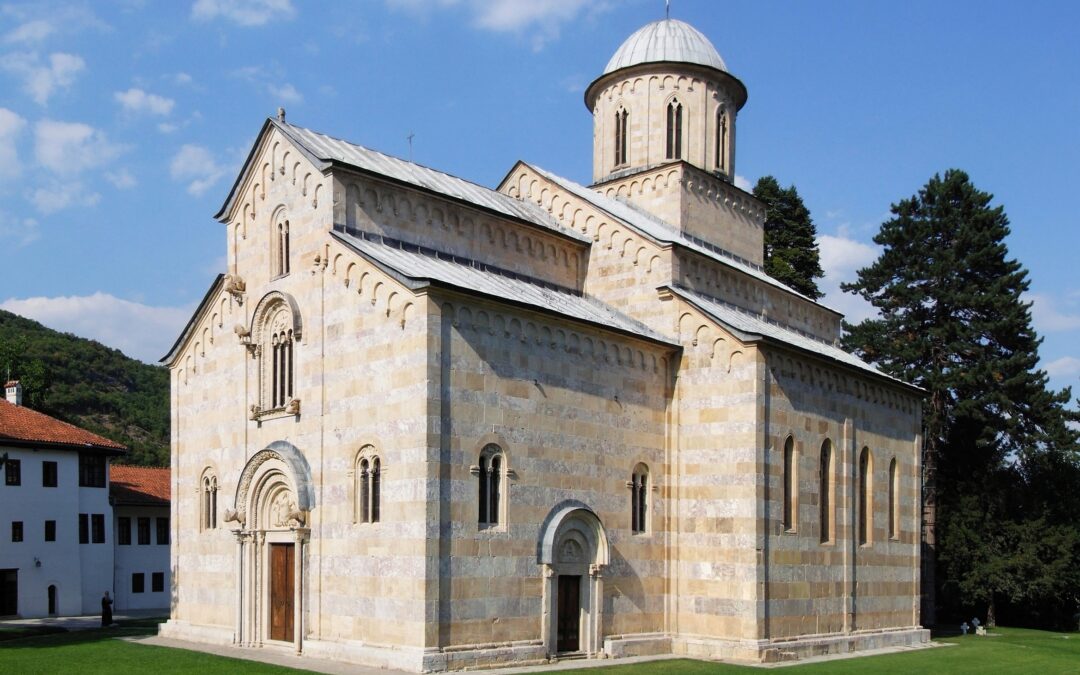OUR BLOG
Visoki Dečani Monastery is the Notre Dame of Serbia
Кosovo and Мetohija monasteries: a unique gallery of the most valuable medieval works of art of global importance
Kosovo and Metohija is the most important thought, the grandest idea, the most complex notion of Serbian culture. It represents the most valuable contribution of the Serbian people to the Christian civilization. Kosovo is the capital of the Serbian artistic empire. It is the legacy and the bequest of Serbian wisdom and spirituality to humankind. It is the legend that the Serbian people grew up with.
These inspired words of the famous Serbian poet, long-time member of the Serbian Academy of Sciences and Arts, Matija Bećković, highlight with good reason all of the spiritual and artistic achievements of Serbian cultural monuments in Kosovo and Metohija. This province, in addition to being known as Old Serbia – the original territory of the medieval Serbian state – is also the greatest spiritual and artistic treasury of the Serbian people. Simply put, Kosovo is the largest museum of our people in which every work of art tells an exciting story of a civilization in full creative force that existed here.
Hence the claim that ‘Visoki Dečani is the Serbian Notre Dame and that the Patriarchal Monastery of Peć is our Saint-Denis’.

Мonastery Visoki Dečani
These sacred sites are not only anchor points of Serbian history, the foundations of spirituality and historical continuity, but also testimonies of the greatest artistic achievements of European medieval art. On the walls of the ancient monasteries of Kosovo and Metohija it is possible to follow the same artistic thread dating back to the ancient ideals, representing the true pinnacle of Roman-Byzantine art of the Middle Ages.
That is why four monasteries of the Serbian Orthodox Church in Kosovo and Metohija have been included in UNESCO’s World Heritage list (Medieval Monuments in Kosovo) because of the immeasurable artistic and cultural values they have preserved for years. These are the monasteries of Visoki Dečani, Patriarchal Monastery of Peć, Gračanica, and the Church of Our Lady of Ljeviš. Since 2006 they have also been included in the List of World Heritage in Danger.
The Dečani Monastery was founded by King Stefan Dečanski in the 14th century. It is known as ‘visoki’, meaning ‘tall’ in Serbian, because of its size which was unusual at the time – the Church of Christ Pantocrator is 36 metres long and 30 metres high, making it one of the tallest buildings in medieval Serbia.

Because of its monumentality and beauty, in time Dečani became one of the symbols of Serbia. Photographs of this sacred site are often displayed in Serbian homes, and many groups of pilgrims pass through its walls every day.
When it was included in the UNESCO Word Cultural Heritage List, the decision stated that ‘its frescoes are among the most valuable examples of the Palaiologos renaissance in Byzantine painting and represent a precious record of life in the 14th century’. The monastery has an exceptionally rich treasury, second only to the one in Hilandar in terms of importance and wealth.

The construction of the monastery, which lasted between 1326 and 1335, was managed by a somewhat mysterious builder, Catholic friar Vito of Kotor, who relied on his Mediterranean Romanesque and Gothic artistic experiences. Therefore, Dečani became the most touching and wonderful meeting point between the East and the West.
The church was built with purple and ochre marble blocks and holds 4,000 square metres of preserved frescoes of exceptional aesthetics, making Dečani a true museum of the Middle Ages. The iconostastis contains a unique representation of the Dečani Theokotos from the 14th century, whereas in the lower part there is a fresco of Jesus Christ holding a sword with the inscription ‘This sword cuts the sin’.
Learn more about the Monastery of Visoki Dečani, as well as other Кosovo and Мetohija monasteries in the latest edition of our Dipos Magazine.








 2018
2018